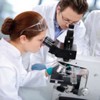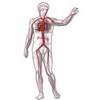카트가 비어 있습니다.
-

Unit I: Doing Scientifi c Investigations
- Lesson 1: Introduction to Science and Technology 22
- Science 23
- Branches of Science 23
- Technology 25
- Effects of Science and Technology on Society 27
- Great Men and Women of Science 27
- Laboratory Tools and Safety Measures 32
- Lesson 2: Ways of Acquiring Knowledge and Solving Problems 40
- Components of a Scientifi c Investigation 42
- Unit Rewind 46
- Unit Test 48
- Differentiated Summative Assessment Task 51
-

Unit II: Diversity of Materials in the Environment
- Lesson1: Properties of Matter 56
- Physical Properties 56
- Chemical Properties 61
- Lesson 2: Solutions, Suspensions, and Colloids 63
- Solutions: Homogeneous Mixtures 64
- Solubility of the Solute 65
- Saturated and Unsaturated Solutions 67
- Concentrations of Solutions 69
- Suspensions 70
- Colloids 71
- Lesson 3: Substances and Mixtures 76
- Separating Components of a Mixture 77
- Lesson 4: Elements and Compounds .. 80
- Elements 81
- Compounds 84
- Elements and Compounds That Are Used in Daily Life 85
- Lesson 5: Acids, Bases, and Salts 89
- Acids 89
- Bases 90
- Safety in Handling Acids and Bases 93
- pH Scale 94
- Salts 94
- Lesson 6: Metals and Nonmetals 96
- Properties of Metals and Nonmetals 96
- Unit Rewind 98
- Unit Test 100
- Differentiated Summative Assessment Task 102
- Investigatory Project 104
-

Unit III: Parts and Functions of Organisms
- Lesson 1: Levels of Organization and Microscopy 111
- Organization 112
- The Microscope and Its Historical Development 114
- Parts and Functions of a Compound Light Microscope (CLM) 115
- Lesson 2: Cell Structure and Function 121
- Types of Cell Found in Living Things 122
- Parts and Functions of a Typical Cell 122
- Comparison of a Plant Cell and an Animal Cell 124
- Shapes of Cells 125
- Lesson 3: Microorganisms 127
- Bacteria 129
- Economic Importance of Bacteria 132
- Protists 133
- Unit Rewind 137
- Unit Test 139
- Differentiated Summative Assessment Task 143
-

Unit IV: Heredity: Inheritance and Variation
- Lesson 1: Sexual Reproduction 148
- Process of Fertilization 149
- Sexual Reproduction in Unicellular Organisms 150
- Lesson 2: Asexual Reproduction 152
- Examples of Asexual Reproduction 152
- Natural Vegetative Propagation 154
- Artificial Vegetative Propagation 155
- Sexual Reproduction vs. Asexual Reproduction 156
- Unit Rewind 158
- Unit Test 160
- Differentiated Summative Assessment Task 162
-

Unit V: Ecosystems
- Lesson 1: Components of an Ecosystem 166
- The Abiotic Factors 167
- The Biotic Factors 171
- Lesson 2: Functions of Ecosystem 174
- Food Chain 174
- Food Web 175
- Ecological Balance 176
- Lesson 3: Interactions in an Ecosystem 178
- Unit Rewind 184
- Unit Test 185
- Differentiated Summative Assessment Task 189
- Investigatory Project 191

